SimplyGo is an account-based ticketing system launched by Singapore’s Land Transport Authority (LTA) in 2019, allowing contactless bank cards and mobile wallets to be used on Singapore’s public buses and trains.
The SimplyGo system topped Singapore public discourse starting on 9 January 2024 when the LTA announced the decision to retire the existing card-based ticketing (CBT) system by June 2024—thus forcing most adult fare commuters to SimplyGo. This policy decision drew significant flak from the public, with many highlighting Simplygo’s lacking features (in particular, the inability to display fare balances at tap-out), reduced compatibility across merchants, and technical difficulties during the SimplyGo transition.
In response to these public sentiments, on 22 January 2024, the LTA would U-turn on its decision and extend the lifespan of the old CBT system, to operate in parallel with the SimplyGo system ‘until at least 2030’. Transport Minister Chee Hong Tat also acknowledged a “judgment error” in the push for full adoption of SimplyGo.
This article will provide a brief history of the SimplyGo ticketing system, events in January 2024, and discuss comparisons with the transit ticketing scene in other countries.
What is SimplyGo?
SimplyGo is a payment method that allows a range of e-payment options to be used on Singapore’s public buses and trains, such as:
- Contactless bank cards (Mastercard, Visa, NETS)
- Mobile wallets (Apple Pay, Fitbit Pay, Garmin Pay, Google Pay, Samsung Pay)
- SimplyGo-compatible stored value cards (EZ-Link/NETS Prepaid Card)
SimplyGo is thus LTA’s branding for its Account-Based Ticketing (ABT) system. Commuters who register their cards on the SimplyGo app can also view their bus/train transactions, and remotely top-up SimplyGo stored value cards.
Why SimplyGo was developed
SimplyGo was developed to increase payment options on public transport, by riding on the EMV® standard [Link] widely adopted by bank cards. This would bring more ease and convenience for fare payments and eliminate the need for carrying a separate stored-value transit card, which had to be topped up regularly. In addition, it was intended to succeed Singapore’s legacy card-based ticketing (CBT) system which, according to LTA, was ‘reaching the end of its operational lifespan’.
SimplyGo is an example of what industry refers to as an open-loop payment system, where a payment card or mobile device is effectively used as a transit ticket–to be tapped at a fare terminal to validate the start/end of a public transport journey–and fares are calculated on the back-end. This is in contrast to a closed-loop payment system like the legacy CBT system, which relies on dedicated cards issued by a transit agency.
Old versus new, in brief
| Card-based ticketing (CEPAS) | SimplyGo |
|
|
Since SimplyGo’s launch in 2019, both CBT and SimplyGo payment modes have been offered side-by-side on public transport. There are thus three fare systems: the account-based ticketing system SimplyGo, the CBT system for adults, as well as the CBT system for concession card holders.
Working Principle, in brief
In stored-value CEPAS cards like EZ-Link and NETS FlashPay, the card balance is stored directly on the card, and fare transactions are processed directly when the card is tapped at a bus fare reader or MRT gantry.
In the SimplyGo system, the card is used to identify the commuter rather than storing actual travel fare values. A back-end server reconstructs a commuter’s journey based on the entry and exit points recorded during tapping, and applies the appropriate fare charges.
SimplyGo Mobile App
The SimplyGo mobile app offers transit ticketing and card-related services that complement the SimplyGo platform, such as viewing past travel transactions and topping up of SimplyGo-enabled EZ-Cards. The app is available on the App Store and Google Play.
While LTA encourages commuters to download it, it is not a must for commuters to use the SimplyGo app.
External Link: SimplyGo App (transitlink.com.sg)
SimplyGo Fees and Billing
Both CEPAS cards and SimplyGo payment modes charge the same distance-based public transport fares. For bank cards, transactions are processed, accumulated and charged to contactless bank cards with the merchant descriptor name “BUS/MRT”.
For Mastercard contactless bank cards, fare charges will be accumulated for up to 5 days or after a total of $15 is spent on transit fares, whichever is earlier. For Visa and NETS contactless bank cards, fare charges will be accumulated daily. The accumulated amount will be posted to a user’s respective bank after 3 days.
Foreign-issued Mastercard or Visa contactless bank cards are subject to an administrative fee per day of use ($0.60 as of 2024), exclusive of other fees imposed by a user’s issuing bank.
SimplyGo Incentives
Apart from ongoing public advertising, ongoing efforts made by LTA to promote SimplyGo included a $2 instant cashback and S$5 FairPrice eVoucher for successful referrals in 2023.
Transit e-payments in Singapore, a brief timeline:
| 1990 | Integrated Ticketing System (ITS) launched [Link] – Magnetic farecard accepted on all buses and trains |
| April 2002 | LTA launches Enhanced Integrated Fare System (EIFS) – EZ-Link contactless smartcard launched; accepted on all buses and trains – Developed by LTA, uses Sony’s FeliCa RFID technology – Magnetic farecards phased out in December 2002 [Link] |
| September 2009 | Full adoption of CEPAS (Specification for Contactless e-Purse Application) [Link] – Locally-developed CEPAS specification extends EZ-Link card use to motoring (i.e. car parks and ERP gantries) and retail purposes – NETS, owned by local banks, issues Flashpay cards that also adopt the CEPAS specification – Supported by LTA’s Symphony for e-Payment (SeP) back-end system for payment processing/clearing – EZ-Link card replacement between Jan-Sep 2009 [Link] |
| March 2017 | Account-Based Ticketing (ABT) pilot for Mastercard starts [Link] – Contactless credit/debit cards for public transport fare payment allowed for the first time |
| December 2018 | Account-Based Ticketing (ABT) pilot expanded to Visa/NETS [Link] |
| April 2019 | SimplyGo is officially launched for Mastercard [Link] |
| June 2019 | SimplyGo extended to Visa [Link] |
| November 2019 | SimplyGo extended to NETS [Link] – By that month, more than 350,000 trips on the public transport network were paid with SimplyGo each day. |
| September 2020 | SimplyGo pilot on Adult EZ-Link CEPAS EZ-Link cards start [Link] – Described as a ‘crucial first step’ to integrate the EZ-Link Card with the SimplyGo platform |
| January 2021 | EZ-Link launches SimplyGo-compatible CEPAS cards [Link] – All adult EZ-Link cardholders offered the option to upgrade to SimplyGo at ticket offices/machines [Link] – LTA commits to phasing out CBT in the future |
| October 2022 | Option to upgrade to SimplyGo offered to most concession cardholders at ticket offices/machines [Link] (except school smartcard holders) |
| November 2022 | NETS launches SimplyGo-compatible CEPAS cards (NETS Prepaid Card) [Link] |
| 9 January 2024 | LTA announces decision to retire card-based ticketing (CBT) system from 1 June 2024 [Link] – All adult fare commuters must switch to SimplyGo – Existing EZ-Link cards must be upgraded to SimplyGo for use on public transport – Existing NETS FlashPay cards may be exchanged for a free SimplyGo-supported NETS Prepaid Card |
| 22 January 2024 | LTA announces U-turn and extends legacy CBT system ’till at least 2030′, delaying full adoption of SimplyGo – NETS Prepaid card exchange scheme cancelled on 19 Jan – Option card exchange scheme for EZ-Link announced, further details in end-Feb 2024 |
| Sometime in 2024 | Option to upgrade to SimplyGo to be offered for remaining school concession cardholders [Link] |
| 2nd half of 2024 | LTA to complete merger of subsidiaries TransitLink and EZ-Link, unifying all transit ticketing and travel card-related services under the “SimplyGo” branding / SimplyGo Pte Ltd, with both mobile apps also to merge [Link] |
SimplyGo promotions
Apart from ongoing public advertising, ongoing efforts made by LTA to promote SimplyGo included a $2 instant cashback per SimplyGo upgrade and S$5 FairPrice eVoucher for successful referrals in 2023.
LTA announces forced transition to SimplyGo (9 Jan)
- LTA | EZ-Link Adult Cardholders and NETS FlashPay Cardholders to Transit to SimplyGo for Public Transport Fare Payments by 1 June
- Non-SimplyGo EZ-Link, NETS FlashPay cards not valid for public transport from June – CNA (channelnewsasia.com)
- NETS rolls out card exchange programme for NETS FlashPay Card as existing card-based ticketing system for adult commuters phases out – NETS
- NETS Prepaid Card comparison [PDF] (nets.com.sg)
On 9 January 2024, the LTA announced its decision to phase out card-based ticketing (CBT) for adult fare payments from 1 June 2024—thereby forcing all adult fare commuters to SimplyGo. This change affected existing commuters using non-upgraded EZ-Link cards and NETS Flashpay cards.
From 1 June 2024, commuters paying adult fares can only use the following modes of payment:
- SimplyGo-compatible EZ-Link card
- Contactless bank cards (Mastercard, Visa, NETS)
- NETS Prepaid Card
- Credit/debit card added to mobile wallet (Apple Pay, Fitbit Pay, Garmin Pay, Google Pay and Samsung Pay)
Two main reasons for the switch were cited:
- SimplyGo adopted by the majority of commuters
In December 2023, there were 2.6 million adult fare payments a day made on the SimplyGo system, compared with 1.5 million such transactions daily on the card-based ticketing (CBT) system—representing SimplyGo adoption by roughly two in three commuters - CBT system nearing the end of its operational lifespan
Instead of renewing the CBT system and continuing to run two systems, which is ‘very costly’, the LTA decided to continue only with the SimplyGo system for adult commuters from 1 June 2024, and phase out the CBT system
Card compatibility from 1 June 2024
| Card Types/Uses | Public Transport | Retail | Motoring |
| Non-upgraded EZ-Link card | Yes No from 1 Jun 2024 |
Yes No from 1 Jun 2024 |
Yes |
| NETS FlashPay card | Yes No from 1 Jun 2024 |
Yes | Yes |
| SimplyGo EZ-Link card | Yes | Yes | No |
| NETS prepaid card | Yes | Yes | No |
| Contactless bank card (Mastercard, VISA, NETS) |
Yes | Yes | No |
The LTA also laid out options for existing CEPAS stored value card users:
EZ-Link Adult Card:
EZ-Link Adult cards will not be compatible with public transport and retail from 1 June 2024. To preserve compatibility, cardholders could upgrade their existing EZ-Link cards to the SimplyGo system at any ticketing machine, SimplyGo Ticket Office or Ticketing Service Centre. The LTA also planned to remind EZ-Link adult cardholders who have yet to upgrade to SimplyGo with prompts to upgrade when topping up their cards at ticketing machines. However, the upgrade to SimplyGo compatibility is not reversible, and the card would no longer be capable of supporting motoring-related expenses like parking and Electronic Road Pricing (ERP) charges.
For non-transit payments (retail and motoring-related), cardholders who wish to continue using these cards for motoring-related payments such as ERP or parking charges should not upgrade their cards to the SimplyGo system. They can continue to top up these cards at 7-Eleven outlets, AXS machines or ATMs. As these non-upgraded cards will no longer be accepted for transit and retail payments from 1 June 2024, cardholders should prepare an alternative payment option, such as a SimplyGo EZ-Link card or contactless bank card, for transit and retail payments.
NETS FlashPay Card
NETS FlashPay cardholders could exchange their NETS FlashPay card for a free NETS Prepaid Card at SimplyGo Ticket Offices or Ticketing Service Centres. The free exchange would be valid from 19 January to 18 July 2024.
For non-transit payments (retail and motoring-related), these cards will continue to be accepted for motoring-related payments and retail purchases at NETS acceptance points. Cardholders do not need to exchange their NETS FlashPay cards to continue using them for these purposes. As these cards will no longer be accepted for transit payments from 1 June 2024, they should prepare an alternative payment option, such as a SimplyGo EZ-Link card or contactless bank card, for transit payments.
Refunds
After 1 June 2024, EZ-Link Adult and NETS FlashPay cardholders can continue to obtain refunds for their cards’ remaining value at SimplyGo Ticket Offices or Ticketing Service Centres in accordance with EZ-Link and NETS’ refund policies.
NETS said in a statement that refunds can also be made at the SimplyGo ticket offices, local bank ATMs or at its customer service centre in Braddell within one year of the card’s expiry.
Social media post
Negative feedback
The forced switch to SimplyGo generated widespread public backlash, with negative comments left on social media channels and forum posts sent to national media outlets. This was also accompanied by derisive gag names for SimplyGo.
Users expressed frustration not only about the decision to shift from what appeared to be a well-functioning system, but also about the lack of visibility regarding the fares charged at the point of transaction on buses and MRT stations after transitioning their cards to the SimplyGo platform—a switch that was not reversible. For users who made the switch from older EZ-Link and NETS FlashPay cards, updated cards also lost the capability to be used with other CEPAS applications such as motoring expenses (e.g. parking and Electronic Road Pricing charges).
| Commuter benefits | Disadvantages raised (not exhaustive) |
|
|
A significant grievance among users was the inability to display fare deductions and card balances directly at the point of use (i.e. at bus fare readers and MRT gantries), which was notably absent in the new SimplyGo system. Being able to see the card balance at the point of tapping out allows users to verify that the correct fare has been deducted, and the card balance shown gives immediate awareness about the remaining funds in a user’s CEPAS card.
When using SimplyGo, the fare charged will not be displayed instantaneously on the fare reader at the point of exit; only a default ‘SimplyGo’ message is displayed when a card or mobile wallet is accepted for payment. Transaction details can be only retrieved on the SimplyGo app, or at physical SimplyGo kiosks.
Other concerns raised include delayed top-ups on the SimplyGo app causing inconvenience, a lack of instant visibility of fare deductions for users without a phone app, and limitations on the functionality of cards converted to SimplyGo, particularly in motoring applications. The delay in registering a top-up for a SimplyGo stored-value card, which takes approximately 10-15 minutes, could directly affect commuters when the top-up was most needed—since a minimum card balance requirement of S$3 was needed for travel.
Users also cited significant overcharging of fares via SimplyGo when the system failed to detect their means of entry/exit, with these instances being difficult to detect unless one monitors SimplyGo transactions regularly. In contrast, when using legacy CBT cards, an error message will be shown at the point of tapping.
As a whole, these issues with SimplyGo highlight a perceived oversight in considering the convenience and preferences of users. Users expressed frustration over the impact on regular commuters, tourists, and the elderly, suggesting that the transition may not sufficiently prioritize the practical needs and concerns of diverse user groups.
- Forum: Address issues in conversion to SimplyGo platform | The Straits Times
- Forum: Unclear how SimplyGo is an upgrade from EZ-Link | The Straits Times
- SimplyGo: An upgrade but for whom? | The Straits Times
- Why the EZ-Link to SimplyGo ‘upgrade’ has upset some commuters (channelnewsasia.com)
- PSA: Check your SimplyGo app for fare overcharge in the past month : r/singapore (reddit.com)
LTA’s response to key concerns
1: Inability to see fares and card balance
According to the LTA, fares and card balances are not displayed on bus/train readers due to the way SimplyGo transactions are processed. In the legacy card-based ticketing system—which covers NETS FlashPay cards and older EZ-link cards not upgraded to SimplyGo—transactions are processed directly at MRT fare gates and card readers on buses, and the fare/card balance is displayed immediately.
In contrast, with SimplyGo, transactions are handled on the back end, similar to credit card payments. This means that the fares charged are not displayed on the fare readers when users tap their SimplyGo cards.
While it is technically possible for the fare gates and bus card readers to obtain and display the card balance and deduction information from the back-end system, doing so would take ‘a few seconds’ and could slow down the entry and exit of passengers. Given the large number of commuters using MRT and buses, this delay could lead to longer queues, which the LTA considers undesirable. Therefore, the decision was made not to display the fare information on the fare readers, to maintain the efficiency of the public transportation system.
The LTA added that other regions that have implemented similar open-loop fare systems have also yet to overcome this issue.
2. Why the need to phase out CBT
The decision to transition to SimplyGo for public transport fare payments was based on several factors. It was more technologically advanced, being able to support modern bank cards and e-wallets, and was already adopted by around two in three adult commuters. The LTA also cited cost reasons for phasing out the old CBT system.
The SimplyGo system, introduced in 2019 by the LTA, is an account-based system designed to support credit/debit cards, mobile wallets, and SimplyGo-enabled stored value cards. LTA reported that SimplyGo payment methods constitute the majority of adult fare transactions on public transport, with the SimplyGo system processing 2.6 million adult fare payments daily in December 2023, compared to 1.5 million daily transactions on the card-based ticketing system in that period. Moreover, the existing card-based ticketing system was nearing the end of its operational lifespan.
To avoid the cost of renewing the ageing card-based ticketing system and to streamline operations, LTA decided to discontinue the card-based system and exclusively adopt the SimplyGo system for adult commuters starting from 1 June 2024. Allowing both systems to coexist, which has been the case since 2019, would come at additional and unnecessary administrative costs. LTA also acknowledged the need for commuters to adjust to the new system, thus allowing for a six-month transition period between announcement and implementation.
3. Alternatives to using bank cards
LTA stated that it is not mandatory for commuters to use credit or debit cards for public transport fares, and provided alternatives for existing cardholders, reiterating the options available to existing EZ-Link and NETS Flashpay cardholders.
Commuters with existing EZ-link cards who wish to continue utilizing them for public transport journeys beyond June 1 can have their cards upgraded at SimplyGo ticket offices or ticketing machines located at MRT stations or bus interchanges. Following the upgrade, these EZ-link cards become compatible with SimplyGo, enabling their use for paying adult fares on buses and MRT trains. It’s essential to note that post-upgrade, these cards cannot be employed for motoring-related expenses such as parking and Electronic Road Pricing (ERP) charges.
Although NETS FlashPay cards will cease to be accepted for adult fare payments from June 1, they can be exchanged for NETS Prepaid cards, which remain valid for public transit usage. NETS FlashPay cards, however, retain usability for retail purchases at convenience stores or for motoring-related expenses.
It is not necessary to use the SimplyGo app, as SimplyGo-compatible cards can still be topped up at ticketing machines and offices. Trip details and card balances can also be viewed at these machines in train stations and bus interchanges. The app, however, offers additional features such as blocking misplaced cards and managing multiple cards on one account.
LTA also reminded commuters that the phase-out of non-compatible EZ-link and NETS FlashPay cards does not impact passengers using concession cards, including seniors and students.
- Fare display using SimplyGo EZ-Link cards ‘technically possible’ but would create longer queues: LTA – CNA (channelnewsasia.com)
- askST: Why can’t I see fares charged on card readers with SimplyGo? | The Straits Times
Mid Jan 2024 – Upgrading process hiccups
Problems faced by commuters attempting to upgrade their EZ-Link cards to the SimplyGo platform were reported by local news outlets:
Failed Upgrades
Some commuters experienced failed upgrades, resulting in invalid cards. This led to frustration and inconvenience for affected individuals, with one commuter telling CNA she was unable to upgrade her card at two different stations.
Long Processing Time
The upgrade process took longer than expected, with CNA observing some commuters waiting for at least five minutes for their cards to be successfully transitioned to SimplyGo. The instructions on the SimplyGo ticketing machine said the upgrade could take up to one minute, but signs posted at stations said it could take a few minutes due to “high traffic”. Some machines also dispensed receipts saying the ‘upgrade failed’ during the upgrading process – but the process was eventually completed when they left their cards on the reader.
Blocked Cards
Some netizens took to SimplyGo’s Facebook page to complain about issues they faced with the upgrade, including one who said he was told the system was down and his card could not be unblocked until Monday.
Another commenter warned others not to use the ticketing machines. “The upgrade fails and it’s a waste of time. My card was blocked instantly too after the failed upgrade and there’s nothing the SMRT (staff) can do to unblock it,” she wrote. Yet another commenter said MRT staff told her to upgrade her card in February due to system glitches.
SimplyGo App issues
As early as the morning of Jan 10, users took to SimplyGo’s Facebook page with complaints about issues they faced in registering for an account, resetting passwords or accessing other features on the app. After repeated tries on the afternoon of Jan 10, the Straits Times could not access the app or sign in to the SimplyGo website.
The app issue was resolved after downloading the updated software at 11.30 pm, although the app and SimplyGo website still carried a message advising users that functions may be affected because of the “overwhelming” number of app downloads. This advisory was no longer there by the afternoon of Jan 11.
In response to these challenges, the Land Transport Authority (LTA) acknowledged the surge in demand for upgrades and the responsiveness issues faced by the SimplyGo app and ticketing machines. LTA and TransitLink have taken steps to enhance their systems and address the issues faced by commuters, including making improvements to the app and backend systems to handle increased transaction volumes. They also apologized for the inconvenience caused and committed to monitoring the situation closely to implement further adjustments if necessary to improve the transition process. Commuters who were unsuccessful in upgrading their cards could also approach SimplyGo ticket offices or ticketing service centres for assistance.
- Commuters run into problems upgrading EZ-Link cards amid complaints over switch to SimplyGo – CNA (channelnewsasia.com)
- Fare display using SimplyGo EZ-Link cards ‘technically possible’ but would create longer queues: LTA – CNA (channelnewsasia.com)
- SimplyGo app overwhelmed by downloads after move to phase out older cards | The Straits Times
NETS Exchange suspension (19 Jan)
After drawing flak from the public, a sign that the authorities had changed their minds came on Jan 19, when a free exchange of NETS FlashPay cards for NETS Prepaid cards that was planned to start that day was postponed “until further notice”. The planned exchange at SimplyGo ticket offices was initially scheduled to begin on Friday, 19 January 2024, and run until 18 July 2024.
Staff were informed of the change only on the morning of 19 January, according to news reports.
Separately, the SimplyGo upgrade feature was also “temporarily unavailable” at some ticketing machines.
- Free exchange of Nets FlashPay cards at SimplyGo ticket offices postponed ‘until further notice’ | The Straits Times
- Free NETS FlashPay card exchange at SimplyGo ticket offices ‘temporarily unavailable’ until further notice – CNA (channelnewsasia.com)
The policy U-turn (22 Jan)
On 22 January 2024, authorities announced that it would extend the use of the card-based ticketing (CBT) system for adult commuters, and not sunset the system in 2024 as originally planned—thereby deferring the forced transition to SimplyGo. The extension will allow adult commuters to continue using the EZ-Link and NETS FlashPay cards on public transport.
An apology was also issued by the Minister for Transport Mr Chee Hong Tat, on behalf of the Ministry of Transport (MOT) and the Land Transport Authority (LTA) regarding the delays experienced during the conversion of existing EZ Link cards to SimplyGo. Acknowledging the need for better preparation, he added that LTA has taken steps to address this issue by updating the SimplyGo app and expediting the card conversion process.
Furthermore, concerns regarding the visibility of fare deductions and card balances at fare gates and bus card readers have been recognized. As a result, the decision to extend the use of the current CBT system for adult commuters has been made, with an additional $40 million allocated for this purpose. While account-based ticketing (ABT) cards like SimplyGo and bank cards offer benefits such as balance protection and convenience, technical limitations prevent the immediate display of fare and balance information at fare gates and card readers. Despite this, LTA is committed to studying ways to enhance ABT card features and improve user experience.
Adult commuters who have purchased or converted their EZ-Link cards to SimplyGo between January 9 and January 22, 2024 (inclusive), and concession cardholders who obtained or converted their cards to SimplyGo on or before January 22, 2024, will have the option to exchange their cards for CBT EZ-Link or Concession cards, respectively, free of charge, if they choose to do so. This includes seniors, students, Workfare Transport Concession cardholders, and persons with disabilities. The LTA added that further details on the card exchange would be available by the end of February, and sought understanding from commuters that time was needed to prepare for the card exchange.
NETS also said it would resume the sale of its FlashPay cards at ticket offices, convenience stores, and online channels.
- [LTA to extend card-based ticketing system for… – Chee Hong Tat 徐芳达 | Facebook
- We will be… – Land Transport Authority – We Keep Your World Moving | Facebook
- LTA | Card Exchange for SimplyGo EZ-Link and Concession Cardholders
- Commuters no longer need to switch to SimplyGo as LTA U-turns on move to replace older ticketing system – CNA (channelnewsasia.com)
- Govt U-turns to allow Ez-link card for public transport payments beyond June 1; move to cost S$40m – TODAY (todayonline.com)
- LTA shelves plan to replace older public transport payment cards with SimplyGo by June | The Straits Times
- NETS to continue sales and support for NETS FlashPay Card in line with existing adult card-based ticketing system extension – NETS
In response to media queries, LTA said that between January 9 and January 22, more than 100,000 commuters have downloaded the SimplyGo app and close to 140,000 adult commuters and concession card users have switched to SimplyGo. It also added that the S$40 million budget for the extension of the card-based ticketing system will be funded by the Government and used for the hardware replacements and systems maintenance required, and would not impact public transport fares.
The decision to reverse the CBT phase-out was announced less than a month after its initial announcement.
A “judgement error” – press conference (26 Jan)
“In making the decision to sunset the CBT system for adult commuters, LTA had underestimated the stong preference of some commuters to want to retain this feature of being able to view the fare deductions and the card balance information at the faregates and bus card readers, and this was a judgment error on our part, and I apologise to our commuters for what happened. We will learn from this and we will do better in future.”
– Transport Minister Chee Hong Tat
In a press conference held on 26 January 2024, Transport Minister Chee Hong Tat acknowledged that the push for full adoption of the SimplyGo payment platform for public transport was a “judgment error” due to underestimating commuters’ strong preference to view fare deductions and card balances. The minister added that the card-based ticketing (CBT) system for adult commuters will be in place until at least 2030.
This decision followed the public outcry following LTA’s initial plan to phase out the older CBT ticketing system in favour of SimplyGo, which accounts for around two-thirds of adult public transport fares. Unlike SimplyGo, the older CBT system enables commuters to view fare deductions and card balances, but LTA had deemed this feature impractical for SimplyGo due to potential delays at bus card readers and MRT fare gates. The Minister noted that at the moment, there is no technical solution to this problem, and Singapore is not alone in facing this issue.
Additional S$40m expenditure
The decision not to discontinue the card-based ticketing (CBT) system for adult commuters will involve an estimated expenditure of S$40 million to support the continued use of EZ-Link cards and NETS FlashPay cards. This funding will cover the purchase of new hardware and the maintenance of the existing CBT infrastructure, as the system approaches the end of its operational life in 2024.
Transport Minister Chee Hong Tat emphasized that the decision to retain the CBT system was influenced by commuter feedback and preferences, which highlighted a strong demand for its continuation. The government will bear the cost of the S$40 million, which will not be passed on to public transport fares.
Consequently, there will be three coexisting fare systems: SimplyGo, the CBT system for adults, and the CBT system for concession cardholders. Plans to explore the potential integration of the two CBT systems in the future are underway. Additionally, efforts to enhance SimplyGo’s features, including the display of fare deductions and card balances at fare gates and readers, are being pursued. However, technical challenges remain unresolved, and decisions regarding the extension of the CBT system beyond 2030 will be contingent upon overcoming these obstacles.
Commuter consultations
Transport Minister Chee Hong Tat addressed concerns regarding the consultation process for phasing out the older ticketing system, stating that consultations were held between 2020 to 2023 with different commuter groups, including focus group discussions and a trial involving over 1,000 commuters. The decision not to transition concession cardholders to SimplyGo was because concerns were raised by seniors unfamiliar with the new system, preferring to check fares at card readers.
The Minister acknowledged that broader consultation could have revealed stronger preferences for maintaining the current system’s features, and emphasised the importance of respecting commuters’ preferences. He added that it “would have been useful” for the authorities to consult more widely and hear a wider range of views and concerns before making a decision.
Transport Minister Chee Hong Tat speaks on SimplyGo uproar – YouTube
Revised card compatibility (until further notice)
| Card Types/Uses | Public Transport | Retail | Motoring |
| Non-upgraded EZ-Link card | Yes No from 1 Jun 2024 (extended till ‘at least 2030’) |
Yes No from 1 Jun 2024 (extended till ‘at least 2030’) |
Yes |
| NETS FlashPay card | Yes No from 1 Jun 2024 (extended till ‘at least 2030’) |
Yes | Yes |
| SimplyGo EZ-Link card | Yes | Yes | No |
| NETS prepaid card | Yes | Yes | No |
| Contactless bank card (Mastercard, VISA, NETS) |
Yes | Yes | No |
Rollback of SimplyGo upgrade feature
20 Jan:
Separately, the SimplyGo upgrade feature was also “temporarily unavailable” at some ticketing machines. “Please note that the upgrade feature on this ticketing machine is temporarily unavailable as we are carrying out enhancements,” read the notices CNA saw on Saturday at Macpherson, Great World, Yew Tee and Maxwell MRT stations. However, no such notices were seen at Harbourfront MRT station.
When asked about the notices, a staff member at Maxwell MRT station said it was due to upgrading issues. Commuters looking to upgrade their cards could still do so at the SimplyGo ticketing office, he added.
In early February 2023, it was observed that the SimplyGo card upgrade option was disabled for most SimplyGo assisted service kiosks and top-up kiosks around the island, while the option to upgrade to SimplyGo was still available at SimplyGo kiosks.
Parliamentary Questions (Feb/Mar 2024)
The discussion on SimplyGo dominated February’s Parliament sitting, with over 20 Members of Parliament (MPs) raising questions about LTA’s handling of the matter and the planned system improvements.
Minister for Transport Chee Hong Tat addressed some of these questions during his Oral Reply in Parliament, largely echoing points previously discussed in the press conference held on 26 January 2024. He elaborated on the background of SimplyGo implementation, the rationale behind the decision to sunset the CBT system, and the limitations of the ABT system.
Additionally, Chee Hong Tat reiterated the directive given to LTA to improve the features and user experience of SimplyGo, and to find ways to enable the display of fare deductions and card balances at fare gates and bus card readers without slowing down the flow of commuters. He also disclosed plans to make the SimplyGo system work for motoring payments in future.
Responding to Dr. Lim Wee Kiak’s inquiry regarding fare errors, Chee Hong Tat noted that such errors can occur with both CBT and ABT cards, albeit at a low rate. Commuters encountering fare discrepancies can seek resolution through SimplyGo’s claims process.
- Oral Reply by Minister for Transport Chee Hong Tat to Parliamentary Questions on SimplyGo (mot.gov.sg)
- Plans afoot to make SimplyGo card also work for motoring payments, Singapore – THE BUSINESS TIMES
In March 2024, Minister for Transport Chee Hong Tat responded to questions posed by Mr Gerald Giam Yean Song, concerning instances where commuters were charged twice for the same trip due to using different SimplyGo devices or cards for entry and exit.
Chee Hong Tat added that such occurrences might also arise from having multiple cards within a wallet (i.e. card clash). Each device or card possesses a unique digital identifier, even if they are associated with the same bank card, resulting in separate recorded transactions. Refunds were issued for 2 out of every 100,000 public transport trips, with an average refund amount of $2.70.
Chee Hong Tat explained that these instances might also arise from having multiple cards within a wallet (i.e. card clash). Each device or card possesses a unique digital identifier, even if they are associated with the same bank card, resulting in separate recorded transactions. Refunds were paid out for 2 out of every 100,000 trips made on public transport, with each refund amounting to $2.70 on average.
However, due to operational limitations, Chee Hong Tat claimed that it was impractical to automatically detect and resolve such transactions, or prevent commuters from exiting when using different devices or cards. For example, the same bank card may be linked to multiple devices and used by different family members. Conducting checks with the backend system would encounter the same latency challenges encountered by account-based ticketing systems (i.e. inability to show fare balance/fare transactions), resulting in congestion at fare gates/bus card readers.
The minister also highlighted ongoing efforts to raise awareness among commuters via publicity campaigns.
Unanswered Questions
No direct answers were offered to many of the MP questions, such as the following:
- Reports/statistics of overcharged trips from SimplyGo card users in the past three years. (answered in Mar 2023)
- Enhancements to display card balances on public transport fare readers.
- Enhancements made to SimplyGo since its launch.
- Improvements in the reliability of the SimplyGo app.
- Feasibility of postponing the mandatory upgrade to SimplyGo until it is compatible with in-vehicle units of motor vehicles.
- Measures to ensure the reliability and security of the SimplyGo platform and backend system.
- Integration of a function to display card balances at MRT fare gates or bus card readers. (briefly answered on 26 Jan)
- Continued acceptance of older EZ-Link cards until functionality for displaying balances is achieved. (briefly answered on 26 Jan)
- Consideration of the impact on less IT-savvy seniors switching to the SimplyGo EZ-Link card system. (briefly answered on 26 Jan)
- Decision factors in favour of adopting SimplyGo, and whether it outweighed the trade-offs. (briefly answered on 26 Jan)
- Consultation with the Smart Nation and Digital Government Office (SNDGO) before the transition to SimplyGo.
- A review by SNDGO to learn from the incident regarding digital inclusivity.
- The estimated shelf life/operational lifespan of the proposed $40 million upgraded CBT solution.
- Whether the $40 million cost for renewing the CBT system alongside SimplyGo is one-off or recurring.
- Expenditure on the development of SimplyGo and the conversion attempt.
- Learning points from the reversal of the decision to phase out the card-based ticketing system and steps to prevent similar issues in the future.
- How the expense of maintaining/improving future systems should be assessed with respect to preserving convenience for commuters.
- Quantity/percentage of commuters using SimplyGo’s additional features over CEPAS cards.
- Enhancements made to SimplyGo since its launch.
- Commuter education efforts regarding SimplyGo.
Card exchange scheme (Mar–Jun 2024)
On 28 February 2024, LTA announced details of its card exchange scheme, available for eligible commuters who have switched to using SimplyGo EZ-Link cards between Jan 9 and Jan 22—before the decision to phase out the older EZ-Link ticketing system.
With the extension of the existing adult card-based ticketing (CBT) system until at least 2030, CBT cards were made available to:
- (i) adult commuters who converted to SimplyGo or purchased a SimplyGo EZ-Link or NETS Prepaid Card between 9 and 22 January 2024, as well as
- (ii) concession cardholders who were issued or converted their cards to SimplyGo on or before 22 January 2024.
To facilitate the exchange, operating hours of all 44 SimplyGo Ticket Offices were extended from 18 March to 26 May 2024. Service ambassadors will also be deployed at all Ticket Offices to assist commuters.
Adult SimplyGo EZ-Link Cards
From 18 March to 30 June 2024, adult commuters who converted to SimplyGo between 9 and 22 January 2024 and who wish to obtain a new CBT card can any of the 44 SimplyGo Ticket Offices island-wide.
Commuters can check if they are eligible to collect a new CBT card by entering their 16-digit SimplyGo EZ-Link card identification number (CAN ID) found at the back of the card through either (i) the SimplyGo website (https://go.gov.sg/eligibilitychecker) or (ii) the SimplyGo hotline (1800-2255-663).
Card collection for eligible commuters will be scheduled based on the last digit of their SimplyGo EZ-Link card identification number. This is to ensure a more organised collection process with shorter waiting times. There is sufficient stock of CBT EZ-Link cards and eligible commuters are encouraged to adhere to their allotted collection dates. Commuters who are unable to collect their cards on the allocated dates can visit the Ticket Office at a time of their convenience from 29 April onwards. Commuters must bring their current SimplyGo card for verification during card collection.
| Collection Schedule for CBT EZ-Link Cards | |
| 18 – 24 March 2024 | EZ-Link Card ID ending with the numbers ‘1’ or ‘2 |
| 25 – 31 March 2024 | EZ-Link Card ID ending with the numbers ‘3’ or ‘4’ |
| 1 – 7 April 2024 | EZ-Link Card ID ending with the numbers ‘5’ or ‘6’ |
| 8 – 14 April 2024 | EZ-Link Card ID ending with the numbers ‘7’ or ‘8’ |
| 15 – 28 April 2024 | EZ-Link Card ID ending with the numbers ‘9’ or ‘0’ |
| 29 April – 30 June 2024 | EZ-Link Cardholders who missed their collection date |
| 1 April – 30 June 2024 | NETS Prepaid Cardholders |
LTA appealed to commuters to follow their allocated timeslot for card collection and sought an understanding that commuters’ understanding that there may be longer queues and wait times during the morning and evening peak hours of 8am to 9.30am and 5pm to 7pm. During peak hours, Ticket Offices will focus on issuing new cards, in order to expedite the process for those who are collecting new CBT EZ-Link cards. Commuters who need assistance on other services such as card top-ups will be assisted by service ambassadors to do so at ticketing machines. Where possible, commuters may wish to consider visiting the Ticket Office during off-peak hours for a shorter wait time.
Commuters who have collected their new CBT EZ-Link card can continue to keep and use their existing SimplyGo EZ-Link card.
NETS Prepaid Cards
Commuters who have purchased a NETS Prepaid Card between 9 and 22 January 2024 can also visit any of the 44 SimplyGo Ticket Offices from 1 April to 30 June 2024 to collect a free NETS FlashPay Card. Cardholders can similarly check their eligibility for a free NETS FlashPay Card at the SimplyGo website or the NETS Customer Service Hotline at 6274 1212.
Commuters can continue to keep and use their existing NETS Prepaid Card even after collecting their new NETS FlashPay Card. They will also have the option to request a refund on the remaining balance in the NETS Prepaid Card via the NETS App.
SimplyGo Concession Cards
All Senior Citizen, Workfare Transport and Person with Disabilities Concession cardholders, as well as Adult Monthly Travel cardholders who were issued or converted their cards to SimplyGo on or before 22 January 2024 will receive a replacement CBT card between 1 April and 31 May 2024. As concession cardholders have addresses registered with TransitLink, we will mail a replacement card to them. This will make it easier for concession cardholders such as seniors and persons with disabilities to obtain a new card. They can choose to either continue using their existing SimplyGo card or switch to the new CBT card.
To ensure that each eligible concession cardholder has only one valid concession card, they will need to activate their new CBT concession card at any Ticket Office should they wish to use it. Similar to the process for activating any new concession card, they are required to bring along their NRIC, existing and new concession cards. The Customer Service Officers at the Ticket Offices will also assist with the transfer of any remaining value to their new concession cards.
Public Commentary
The decision by LTA to reverse its policy on SimplyGo received mixed reactions. While some commuters expressed relief and appreciation for retaining the older ticketing system, others found the entire exercise redundant and expressed frustration over the inconvenience caused during the transition period. Observers noted that the reversal highlighted flaws in LTA’s communication strategy and readiness for such changes.
Additional concerns were raised regarding the consultation process, with some commuters feeling that their preferences were not adequately considered. Hiccups during the SimplyGo switch led to calls for better preparation and user testing before implementing significant changes to public transport payment systems. Overall, the reversal prompted a reflection on the importance of effective communication, consultation, and responsiveness to commuter needs in policymaking processes.
Media commentary, summarised in points: (Jan-Feb 2024)
Shelving of SimplyGo plan exposes LTA’s lack of preparedness: Observers | The Straits Times (23 January 2024)
The shelving of plans to phase out older adult public transport payment cards was met with relief by public transport users, who said they were glad their concerns were heard. However, some commuters felt the aborted exercise was ultimately redundant, and expressed frustration at the inconvenience they had to bear to update their EZ-link cards.
Commuters’ responses reflected criticisms of the LTA communication and preparedness: — “The Government should have thought about the public’s opinion” — “If LTA wants to roll out a new system, make sure people on the ground can manage” — “The Government should have thought about the public’s opinion before coming up with this type of policy”.
According to Walter Theseira (head of the urban transportation programme at the Singapore University of Social Sciences), the backlash against SimplyGo revealed a policy blind spot, highlighting the mistake of assuming universal acceptance of the account-based system. LTA’s failure to adequately explain the need for phasing out the older ticketing system contributed to the backlash. Regarding the additional $40 million expenditure to maintain the older card system, Prof. Theseira considered it an avoidable expense, but one worth paying to ensure commuters do not feel excluded from the public transport system. He urged authorities to explore more innovative ways to improve payment systems and engage the public effectively.
Dr Carol Soon (principal research fellow at the Institute of Policy Studies) pointed out issues with the lack of interoperability of SimplyGo cards with other payment systems and the failure to consider different segments of the public during the product design stage.
Terence Fan (transport analyst from the Singapore Management University) criticized LTA’s lack of foresight in managing the transition, noting it was the second recent U-turn in response to public outcry, the earlier being LTA’s U-turn on the planned withdrawal of Bus Service 167 in late 2023. Fan warned that continued mismanagement by LTA could lead to questions about its leadership, and suggested that LTA should make tweaks to make the system more palatable to commuters.
Analysis: LTA’s SimplyGo missteps — what went wrong and what needs to be done – TODAY (23 January 2024)
Decision Making:
The LTA stated that conducted “market testing and focus group sessions” with both adult commuters and concession cardholders before finalizing the SimplyGo transition plan. Additionally, it distributed account-based cards to over 1,000 concession cardholders in 2021, allowing them to test the system and provide feedback.
However, Associate Professor Raymond Ong of the National University of Singapore raised doubts about the comprehensiveness of the focus group research, questioning whether considerations for transitioning to SimplyGo were adequately addressed. “We also lack precise details regarding the focus group sessions, including participant numbers and whether they represented diverse demographic groups like the elderly and those with lower incomes,” he noted.
Associate Professor Walter Theseira from the Singapore University of Social Sciences added that trial participants typically volunteer, potentially indicating a predisposition towards accepting SimplyGo, suggesting that their feedback might not fully represent the broader public sentiment. He proposed enhancing SimplyGo’s benefits to encourage wider adoption, such as enabling commuters to use subsidies directly without voucher collection by implementing a daily fare cap.
LTA acknowledged concession card holders’ feedback to see fare deductions and cash balance at the gantry during its trial and focus groups. Assoc Prof Terence Ho of the Lee Kuan Yew School of Public Policy pointed out that LTA should “have also been attuned to similar concerns shared by non-concession cardholders”.
Communication:
Transport analyst Terence Fan from the Singapore Management University (SMU) criticized LTA’s abrupt announcement, stating that it caught commuters off guard, especially those who had recently replaced their expired EZ-link cards. He argued that the six-month transition period was insufficient, particularly considering that a third of adult commuters needed to switch to SimplyGo. Fan emphasized the importance of transparent communication regarding the flaws of the new system, suggesting that failure to do so could increase commuters’ apprehension about the change.
Walter Theseira noted that while LTA cited two-thirds of adult commuters using SimplyGo, 41 percent used bank cards, unaware of their use of SimplyGo technology. He highlighted the need for education about SimplyGo’s benefits and potential rebranding to improve its public perception.
Dr. Carol Soon stressed the importance of integrating communication efforts with product development and addressing commuter concerns early on. Asst Prof Fan recommended providing commuters with more time to adapt, proposing a one-year advance notice for future transitions.
Political Cost:
Experts interviewed by TODAY offered mixed opinions regarding the political ramifications of LTA’s decision to postpone its SimplyGo plans.
Ms Nydia Ngiow from consultancy firm BowerGroupAsia raised questions about whether the decision was influenced by an upcoming election, noting concerns voiced in a forum letter published in September 2023 regarding transport fares not being shown with SimplyGo.
Assoc Prof Theseira warned that not heeding commuter concerns could lead to a loss of trust in the government, emphasizing the importance of addressing public dissatisfaction.
Assoc Prof Eugene Tan from SMU praised the decision to reverse course, describing it as an act of moral courage to address legitimate public concerns, despite potential embarrassment.
Why are commuters unhappy over the SimplyGo switch? | Heart of the Matter podcast (youtube.com) (23 January 2024)
In a podcast hosted by CNA (Heart of the Matter Podcast), Associate Professor Walter Theseira suggested that LTA did not anticipate the significance of stored value cards to two key demographics: individuals seeking budgetary control, particularly low-income users, and those wary of potential overcharges due to past pricing discrepancies between buses and trains.
The lack of forthcoming information regarding the cost of maintaining the legacy system further complicates matters (i.e. the question of “Why fix something that isn’t broken”). Unlike in conventional commerce scenarios (such as supermarkets) where numerous payment systems and providers are commonplace, fewer systems are ultimately better for public transport as taxpayers absorb the associated costs.
Finally, the assumption that commuters would readily embrace SimplyGo as an improvement lacked sufficient communication and transparency, leaving many unconvinced due to the system’s limitations (such as the inability to display fare balances), potentially exacerbated by a status quo bias favouring the familiarity of the old system over the uncertainty of the new. Prof Theseria also suggested delaying implementation until additional assurances or features can be provided to address commuters’ concerns.
Trust – the feature that vending machines and ATMs share, but SimplyGo lacks | The Straits Times (24 January 2024)
In an opinion piece published by The Straits Times, Lim Sun Sun (vice president of partnerships and engagement and professor of communication and technology at Singapore Management University) highlights the crucial role trust plays in user experience – trust that transactions have been performed reliably and fairly. Drawing comparisons to trust-inducing designs, from physical machines such as vending machines and ATMs, to digital services such as ride-hailing, parking, and banking apps, the article argues that trust is essential for consumer confidence and adoption of new technologies.
In the context of SimplyGo, the inability to show commuters how much they have been charged for their rides erodes commuter trust in this system, likening it to a ‘leap of faith’ that one is not overcharged for a journey, and an understandable concern in light of recent cyberscams and the desire to manage the rising costs of living. Ultimately, more needs to be done to incentivise the adoption of SimplyGo while introducing more features to earn commuters’ trust.
Commentary: LTA reversal on EZ-Link phase out is a reminder that systems should serve people – Channel NewsAsia (26 January 2024)
NUS Business School’s Emir Hrnjic and Monetics’ Gordon R Clarke suggested that people in Singapore have come to expect more from a Smart Nation, not a technical change that felt like a step back user experience.
Regarding the need to discontinue the legacy ticketing system, the article points out that it is unusual for a government agency to introduce changes that create new challenges instead of addressing existing ones. After all, systems should serve people – and not the other way around. Citizens questioned the need to discontinue the current ticketing system, which accommodated both legacy EZ-link cards and SimplyGo, serving various purposes such as public transport, retail payments, and motoring needs.
Despite a five-year transition window and ongoing efforts to encourage SimplyGo usage, the fact that only two in three users have adopted SimplyGo points to the legacy system’ appealing features. While commercial concerns often drive system changes, in public service, factors like ease of use and cost to the user should not be overlooked. For instance, displaying a low balance on a stored value card would alert commuters to top-up, which is crucial for those with tight finances. However, with SimplyGo, an insufficient balance results in a “card failed” message, lacking the informative nature of the previous system.
Comparisons were also drawn to the government’s accommodation of different groups in other areas, such as the redemption of Community Development Council (CDC) vouchers through both digital means (via Singpass) or physical means (collected at community centres). In contrast, the SimplyGo rollout lacked clarity and foresight. Although data-driven, LTA’s decision ignores the conservative nature of customers regarding payment behaviour.
The argument that two-thirds of adult fare transactions use SimplyGo also ignores the concerns of the remaining one-third of commuters. The article argues that Singapore’s endeavour to become a Smart Nation will be compromised if a segment of the population perceives themselves as being progressively excluded, such as older folks who are not using concession cards but who may not be tech-savvy enough to manage their fares with an app.
Furthermore, the failure to clarify the reasons behind discontinuing the legacy system and the benefits of doing so likely contributed to public backlash. Despite the policy reversal following public uproar, the SimplyGo debacle highlights a lack of strategy and user-centricity, indicating the need for more thoughtful approaches to technological transitions in the future.
The Positives From The SimplyGo Saga – Rice Media (ricemedia.co) (24 January 2024)
Despite the setback, Rice Media suggested taking positive outcomes from the saga. Firstly, it demonstrated the LTA’s willingness to listen to public feedback, as evidenced by the decision to retain the existing cards and invest additional funds in the transport system. This responsiveness is crucial given the significant reliance on public transport among Singaporean residents, with a 2021 census revealing that 57.7% of employed residents here took combinations of the bus, MRT or LRT to work in 2020. Additionally, the episode served to unite Singaporeans around a common concern.
Comparison with overseas systems (as of 2024)
In the wake of the policy U-turn, LTA and Minister Chee sought to emphasise that account-based ticketing (ABT) systems in public transport employed locally and overseas have no technical solution to the inability to display fares instantaneously, and consequently, no fare information is shown at fare terminals.
- LTA Facebook post on public transport ticketing systems locally and overseas Land Transport Authority – We Keep Your World Moving | Facebook
- Shelving of SimplyGo plan: What are other cities doing with public transport payments? | The Straits Times
London / New York
London introduced contactless payments (i.e. ABT) on its buses in 2012, and on its urban rail network in 2014, offering both Oyster cards and contactless bank cards as payment options. Figures released by Transport for London indicate that in August 2022, 530,000 daily trips were taken across London using Oyster cards, which utilize a card-based scheme, while 1.39 million rides were paid for each day using contactless bank cards. This represents around 71 per cent adoption of ABT across all public transport journeys.
Despite the popularity of contactless payments, the city continues to support the Oyster card system due to accessibility concerns and user preferences. Plans are also underway to transform the Oyster card into an account-based system through a phased transition expected to extend until August 2026.
- Contactless payments due for Tube network – BBC News
- New analysis shows that pay as you go with mobile on the Tube now more popular than before the pandemic – Transport for London (tfl.gov.uk)
- Oyster cards to be killed off under £1.5b TfL revenue collection contract (thestack.technology)
In New York, OMNY (One Metro New York) is an account-based payment system launched in New York in May 2019. The system seeks to replace the MetroCard (magnetic stripe cards) in use since 1993, and like SimplyGo, the system accepts contactless bank cards, physical OMNY cards, and smart devices.
Current challenges in New York have resulted in the indefinite postponement of the complete shutdown of the card-based MetroCard system. The transition, initially set for completion by 2023, faced delays due to the need to install cash payment options on OMNY vending machines, unify the system across the entire transport network, and various other technical issues. The project has incurred US$772 million (S$1.03 billion) in costs and could increase further in future. Concerns about data security and accessibility for the homeless community without smartphones or bank cards further complicate the adoption process.
- MTA’s $645M OMNY system hit with software bugs, costly delays (nypost.com)
- Why buy an OMNY card – Youtube
- MTA’s new tap-and-pay system, OMNY, has major privacy issues: report – Curbed NY
Hong Kong
In Hong Kong, the Octopus stored-value card, introduced in 1997, is a widely adopted payment method for both transit and retail transactions. Since 2021, franchised bus operators have gradually introduced e-payment options, and in December 2023, contactless Visa bank card payments were also made available on the Mass Transit Railway (MTR) network.
Passengers utilizing contactless payment methods on the MTR heavy rail lines must utilize the designated light blue ticket gates, which have been specifically modified for contactless transactions. MTR intends to broaden the range of card options accepted for payment in 2024.
Also in 2023, MTR allocated HK$1.3 billion (S$223 million) to replace 2,400 fare gates and upgrade existing ones to support various payment methods, including the Octopus card, single-use tickets, QR code tickets (via payment app Alipay, for instance), and credit cards.
- NWFB & Citybus Introduce New e-Payment System Accepting Eight Types of Contactless Credit Card and QR Code Bus Ride Payment | Citybus
- KMB Introduces E-Payment System | The Kowloon Motor Bus Co. (1933) Ltd 九龍巴士(一九三三)
- MTR Launches First Contactless Bank Card Payment at Entry/Exit Gates | MTR
- MTR Invests Over $1.3 Billion to Upgrade Automatic Fare Collection System New Gates to be Launched to add Credit Card Payment Option | MTR
Tokyo
The rollout of ABT in Japan remains fragmented, with individual operators pursuing their own approaches. Open-loop payment systems have only recently been introduced in Tokyo.
In August 2023, commuter rail operator Tokyu Corp. introduced open-loop payment technology on its Den-en-toshi Line, and gradually expanded to other Tokyu lines starting from December 2023. To utilize this system, passengers are required to purchase rail passes online via the Q SKIP platform using a major credit card. Upon purchasing a pass, passengers have the option to either swipe the same credit card used for the purchase to enter the station or scan a QR code associated with their pass using a QR code reader. This method does not constitute true “touch to pay” functionality, a feature which Tokyu plans to implement in 2024.
Tokyo Metro plans to conduct a trial for open-loop payment on selected lines starting in fiscal 2024. During the trial period, passengers who purchase a special ticket online in advance will be able to access the subway by simply tapping their credit card over a sensor at the ticket gate.
- More rail firms in Japan to allow payment of fares by credit cards in 2024 | The Straits Times
- 「クレジットカードのタッチ機能」「QRコード」を活用した乗車サービスの実証実験を 8月30日(水)から開始 ~同日にデジタルチケットサービス「Q SKIP」の販売サイトをオープンします~|ニュースリリース|東急電鉄株式会社 (tokyu.co.jp)
- 「クレジットカードのタッチ機能」「QRコード」を活用した乗車サービスの実証実験を 2023年12月12日(火)から東横線・目黒線全駅でも開始し、 2024年1月中に東急線の全駅(※1)で実施します|お知らせ|東急電鉄株式会社 (tokyu.co.jp)
- Q SKIP(キュースキップ) | 東急線のデジタルチケットサービス (tokyu.co.jp)
- クレジットカードのタッチ決済等を活用した乗車サービスの実証実験を2024年度中に開始します|東京メトロ (tokyometro.jp)
More technical background:
EZ-Link/SimplyGo architecture
Reddit user Dartteon illustrates the technical architecture and differences between the EZ-Link and SimplyGo platforms, highlighting the back-end fare processing loop that causes difficulties in displaying SimplyGo balance [Reddit Post / Media Link].
In stored value cards like EZ-Link, the card balance is stored directly on the card, which enables transactions to be processed directly at the card reader in fractions of a second. The transaction amount and card balance can be displayed by the card reader.
In the SimplyGo ABT system, credit cards are primarily used as a form of identification rather than storing actual travel fare values. Tapping a credit card or mobile device at a card reader allows the system to record the entry and exit points of the journey. All transaction data is transmitted to a centralized backend server which tracks the commuter’s journey based on the entry and exit points recorded, and applies the appropriate fare charges.
According to the LTA, this process typically takes ‘a few seconds’, and thus the display of fare information at card readers would slow down the flow of commuters through the system.
Missed opportunities in Singapore
Technology blog Techgoondu sheds light on longstanding issues plaguing the country’s contactless payments market and missed opportunities over the past two decades.
Like Japan’s efficient Suica/Pasmo IC cards and Hong Kong’s Octopus card, Singapore’s old EZ-link contactless cards used the same Sony FeliCa technology from 2002 to 2009, which was designed for transit payments and optimised for tap speed. However, the fragmentation between EZ-link and NETS CashCard hindered widespread adoption, due to competing interests and incompatible technologies.
Both EZ-Link and NETS were vying for dominance in the stored-value card market, with the benefit of increasing turnover via transaction fees. Each was backed by major stakeholders — EZ-Link by LTA and public transport operators, and NETS by major banks in Singapore. Both were not interchangeable, and while EZ-Link was used for transit payments, the NETS CashCard was used for motoring transactions (e.g. car parks and ERP). In a bid to standardize, Singapore introduced the CEPAS local standard in 2009, aiming for compatibility between NETS and EZ-Link cards.
Despite efforts to address fragmentation, the proliferation of alternative payment methods, such as credit cards and e-wallets, led to the decline in NETS/EZ-Link card usage beyond transit and motoring payments. Consequently, the introduction of the SimplyGo system represents a shift towards bank card standards — relying on the EMV standard managed by EMVCo, a consortium of credit card companies including Visa and Mastercard — while also introducing flexibility to payment modes and ways to top-up cards.
Also, despite attempts to introduce NFC SIM cards resembling Japan’s FeliCa system, these efforts were short-lived due to lack of consumer interest and adoption.
- SimplyGo EZ-Link woes: Why contactless payment lifted off elsewhere but not in Singapore – Techgoondu (Published 15 Jan 2024)
- Well past time that ez-link and Nets cards are truly interchangeable, starting from a hawker centre – Techgoondu (Published 26 Jan 2018)
- Paying via an NFC SIM card : The ultimate guide to paying with your smartphone in Singapore – HardwareZone.com.sg (Published 10 Jul 2017)
- New EZ-Link NFC SIM card now lets you pay for rides with your smartphone – HardwareZone.com.sg (Published 29 Mar 2016)
Open vs. Closed payment loop – in further detail
SimplyGo is an example of what industry refers to as an open-loop payment system, where a payment card or mobile device is effectively used as a transit ticket–to be tapped at a fare terminal to validate the start/end of a public transport journey–and fares are calculated on the back-end. This is in contrast to a closed-loop payment system like the legacy CBT system, which relies on dedicated cards issued by a transit agency (EZ-Link / TransitLink for EZ-Link cards, and NETS for NETS cards).
Closed loop ticketing operates on dedicated cards compatible with specific operating standards (e.g., FeliCa, MIFARE, CIPURSE, Calypso), which store all relevant passenger information, including funds, travel rights, and records. This form of ticketing requires customers to purchase a card before travelling, and grants them access to the public transport system operated by the respective provider. The public transport operator/agency remains responsible for sales and validation equipment, as well as ticket administration. To enhance convenience, closed-loop smart cards can be supplemented by mobile phone-based solutions and ticketing apps.
In contrast, open-loop ticketing payment eliminates the need for transit-specific cards, as payment cards or mobile devices serve as the ticket. Passengers can access public transport simply by tapping a valid open-loop contactless payment media on the payment terminal. Payment for the journey can occur during the trip, after its completion, or at the end of the day, where the fare is calculated based on actual usage.
Open loop payment does not require prior ticket purchases, app downloads, or manual sign-up processes. Passengers can utilize the contactless payment methods already widely used in their daily lives. Without dedicated stored-value cards issued by an operator, open-loop payment typically relies on an account-based ticketing system, where travel rights and records are stored in the back-end system. This system also facilitates travel logic, fare policies, and fare calculations.
Industry comparison between Open vs. Closed loop payments
The following comparison chart is prepared by industry site Mobility Payments:
Implementation challenges
Interoperability with legacy systems
A white paper published by the International Association of Public Transport (UITP) lists several challenges for transport operators in adopting open-loop payments. One major challenge is that Public Transport Operators (PTOs) with existing closed-loop smart card systems may find it necessary to manage both closed and open-loop payment systems concurrently, at least initially. This can complicate operations and require additional resources to maintain parallel systems during the transition period.
In Singapore, the SimplyGo system was implemented on existing hardware, including LTA’s fare collection systems, which could have introduced limitations in system performance. For instance, the bus fare collection equipment (NOBE) in use since 2014 still relies on outdated 3G networks for backend server communication, which sometimes contributes to delayed SimplyGo transaction notifications and billing, which can take up to a day. Transport blogger yuuka from the blog From the Red Line reports that using bank cards on the Circle Line’s old-generation Thales faregates takes roughly a second to open.
However, infrastructure upgrades are currently underway. For buses, in July 2023, the Land Transport Authority initiated several tenders to acquire new fare collection and fleet management equipment for public buses. This new equipment will utilise 4G or 5G networks for communication between buses and backend systems, facilitating the transition away from 3G services in Singapore. Additionally, Thales has been contracted to replace and install 1,350 fare gates at MRT stations across the North-South, East-West, and Circle lines by 2026.
In other regions, ABT implementation has necessitated hardware modifications to existing fare collection equipment, such as applications in Hong Kong and Japan as elaborated above.
Commuter trust
A high level of trust needed from commuters for open-loop payment systems to succeed, as commuters need to feel assured that they will be charged the correct amount for their journeys.
For commuters using ABT, there is a possibility of technical glitches or errors in fare calculation, leading to commuters being charged incorrectly for their journeys. This can erode trust in the system and lead to frustration among commuters who expect accurate and transparent fare calculations. In Singapore, this was a key complaint with the SimplyGo system, as fare readers were unable to show fare information, and cases of overcharging are documented in the earlier section of this article.
Other risks for commuters are the potential for unauthorized access or fraudulent use of payment cards/mobile devices or payment information, as data security breaches could lead to financial losses for victims and undermine confidence in the ABT system. In terms of SimplyGo, there is limited available information on cybersecurity measures employed.
Revenue risk & Increased complexity
One risk faced by PTOs in post-payment arrangements found in ABT systems is the potential for revenue loss due to insufficient funds in a user’s account. In these systems, card authorisation occurs only after the passenger has commenced the journey. Consequently, if there is an insufficient balance on the card, this shortfall would only be detected after the transaction has been processed. Transit agencies must manage this “first ride risk” to minimize financial exposure for the PTO while optimizing the customer experience.
Another risk related to post-payment arrangements is the increased complexity of fare calculation. In post-payment systems, fares are computed based on the actual travel distance or duration, which varies for each passenger. This complexity necessitates robust backend systems that accurately track and calculate fares in real-time. Furthermore, these systems must reconcile revenue from various sources, including contactless payments, mobile apps, and fare cards.
Access for all
Ensuring access to public transport for all commuter groups requires solutions for persons who do not already own contactless cards or wish to use one, such as children or persons who do not meet the requirements to access banking services. In Singapore, SimplyGo-compatible stored value cards are available for this purpose, which can be topped up with cash at certain top-up kiosks and at SimplyGo Ticket Offices. Eligible commuter groups also have access to concession cards, most of which are already SimplyGo-compatible. LTA intends to roll out SimplyGo to all concession cardholders in 2024.
- Open Loop Payment in Public Transport | UITP Urban Mobility Open Payments Forum White Paper (uitp.org) [PDF] (May 2022)
- Open Loop vs Closed Loop: Which is best for Fare Collection (littlepay.com) (October 2021)
- The payment ecosystem. There’s a greater story behind the… | by yuuka | From the Red Line | Medium (January 2024)
- Thales’s state-of-the-art Automatic Fare Collection gates have been selected by Singapore Land Transport Authority (LTA) | Thales Group (October 2021)
- SimplyGo Concession Cards – EZ-Link (ezlink.com.sg)
Is closed-loop payment truly outdated?
This article concludes with examples where closed-loop payment systems have expanded beyond transit payments or localised regions, providing more value to customers.
Netherlands / OV-chipkaart
In the Netherlands, the OV-chipkaart functions as a stored value smartcard accepted for transit payment throughout the country. Originally launched in April 2005 in the Rotterdam Metro, it has since been expanded across the country and adopted by various transportation modes, including buses, trams, metro trains, and intercity trains. This widespread acceptance is a notable success for a closed-loop payment system.
Hong Kong / Octopus
In Hong Kong, the Octopus card was initially introduced in 1997 for fare payments on the MTR metro network, rapidly gaining popularity across various public transportation modes and retail businesses.
As of 2023, there are 20 million Octopus cards and products in circulation, and its usage extends to a wide array of businesses, including payment for public transport, parking facilities, road tolls, convenience stores, retail outlets, restaurants, vending machines; and access control for schools, offices, and residential buildings. Octopus’ application has been extended to online and mobile payment, including virtual cards for Apple, Samsung and Huawei devices. There are currently more than 170,000 Octopus acceptance points available in the market, with Octopus handling 15 million transactions worth HK$300 million (S$51.6 million) every day.
The Octopus app allows users to manage their physical and virtual cards, make payments using NFC and/or QR codes, and access the Faster Payment System (FPS) akin to Singapore’s PayNow system. Additionally, the virtual card can function as a debit card in collaboration with Mastercard and UnionPay. The mobile-based system operates via NFC technology for ticketing at fare gates and card readers. Octopus also rewards its users with a loyalty scheme.
Despite its present success, Octopus faces limitations due to its reliance on Sony’s FeliCa protocol which was developed in 1988. Compatibility with mobile phones and devices is restricted to those supporting the Sony FeliCa standard, posing challenges in terms of global interoperability compared to more universal NFC standards like ISO/IEC 14443. In an interview with The Straits Times, Octopus’ chief operations officer Sammy Kam told The Straits Times that the company’s biggest present-day challenge was to nudge users into adopting its mobile-based system.
- About Octopus Card – Octopus Hong Kong
- Ditch your cards and switch to the app, says HK’s Octopus amid digitalisation push | The Straits Times
Tokyo / Suica (& Pasmo)
Tokyo is buckling a global trend as major transit agencies are not rushing to adopt open-loop payment systems. JR East, the largest single transit agency in Tokyo, launched the Suica card in November 2001 and has yet to introduce open-loop payments, with no plans to do so. Two main transit cards (locally called IC cards) are currently used in Tokyo:
- Suica: Owned by East Japan Railway Company (JR East), launched in 2001
- Pasmo: Owned by a consortium of Kanto-area railway and bus operators, launched in 2007
The reason for this lies in the extensive use and success of stored-value Suica and Pasmo transit cards in Tokyo rendering the adoption of account-based ticketing unnecessary. These cards use Sony’s FeliCa protocol and are extensively used for public transport and various other transactions, such as retail purchases, vending machine payments, and even access control in some organizations. As e-money cards, Suica/Pasmo cards are highly interoperable and widely accepted throughout Japan, effectively rivalling credit card payment methods.
An additional benefit of the FeliCa protocol is its payment processing speed. During Suica’s development, stringent time limits were set: just 200 milliseconds for payment processing when tapping the IC card on the reader. Additionally, the system needed to handle at least 60 passengers per minute, as required for smooth passenger flow through ticket gates at peak hours. FeliCa met these demands, enabling its integration with Suica. Other railways introduced smartcard fare payment systems also based on the FeliCa protocol, enabling interoperability through various interagency agreements.
The introduction of FeliCa chips onto some mobile phones sold in Japan since 2004 (also called Osaifu-Keitai) also enabled users to tap their phones for transactions instead of physical cards. Now, Mobile FeliCa supports many smart card ticketing systems across Japan and continues to be offered on most phones sold domestically, providing tap-to-pay functionality on smartphones and some wearable devices.
As of March 31, 2023, there have been around 95.0 million Suica cards issued, with 20.0 million of them being Mobile Suica cards. Suica is accepted at roughly 5,000 railway stations and 1.63 million stores nationwide. The system processes approximately ¥262.97 million (S$2.36 million) in transactions monthly.
- Mobile FeliCa Platform | FeliCa Networks
- Sony Corporation – FeliCa – Overview of FeliCa – The FeliCa System
- Transit Gate Evolution: why tap speed matters – AtaDistance
- Forget open loop payments, Japan’s Suica is the ultimate transit fare platform. (youtube.com)
- Pasmo/Suica Interoperable Network Map [English / Japanese] – Pasmo
JR East has been actively enhancing Suica’s capabilities and reach. Notably, in 2019, they introduced Suica 2 in 1 region-affiliated cards, extending Suica infrastructure to regional transit agencies. These cards offer region-specific commuter plans and loyalty program points.
In 2023, JR East expanded Suica coverage to Aomori, Morioka, and Akita areas, introducing a new cloud-based fare transaction processing system in tandem. As reported by the AtaDistance blog, this system not only reduces local processing hardware costs but also enables cost-effective expansion of Suica beyond urban areas, while maintaining the same user experience at ticket gates. All fare calculations and processing are performed on a centralised server, thus lowering the installation and maintenance costs associated with maintaining a dedicated network backbone connection to JR East servers.
- Suica 2 in 1 Region Affiliate List – AtaDistance
- Final frontiers: How Suica 2.0 will solve the IC fare region barrier problem and much more – AtaDistance
- Cloud Suica and Suica region extensions announced for early 2023 – AtaDistance
- 新しいSuica 改札システムの導入開始について (jreast.co.jp)
- JR East Japan to introduce new “Suica” ticket gate system from three areas in the northeastern part of the country | Mynavi News
- JR East Group Report INTEGRATED REPORT 2023
Joel Bassett, who writes for the blog AtaDistance, also argues that EMV technology is unlikely to replace FeliCa in Japan for several reasons. Firstly, both FeliCa and EMV come with licensing costs, and transitioning to EMV would require companies to ally with an EMV payment brand to create a white-label gateway, closed-loop card, similar to New York’s OMNY card. Additionally, the transaction speed of EMV’s NFC A protocol (~500 ms) is slower than that of FeliCa (100-200 ms), and offline payment support is limited, because mutual authentication and card balance checks are done on central servers.
Furthermore, major transit operators like JR East, JR West, and likely JR Central are unlikely to implement open-loop systems, as they already own FeliCa and QR closed-loop products, making it unnecessary to partner with EMV card brands. Open loop systems may also struggle with the complex fare structures used on Japan railways.
- Global FeliCa iPhone Delivers New Choices in Payment Turf Wars – AtaDistance
- End of the line for Suica and the native Japan Transit IC smartcard standard? – AtaDistance
- Forget the Suica vs EMV open loop soap opera, it’s all about loyalty program banks now – AtaDistance
In summary, the FeliCa-enabled Suica card has emerged as a clear success story in the domain of closed-loop payment systems. Despite the growing trend towards open-loop payments, the success of FeliCa cards is indirectly reflected in Tokyo transit agencies’ reluctance to embrace alternatives, underscoring the enduring efficacy and adaptability of closed-loop standards like FeliCa.
External Links
- —
References
- —
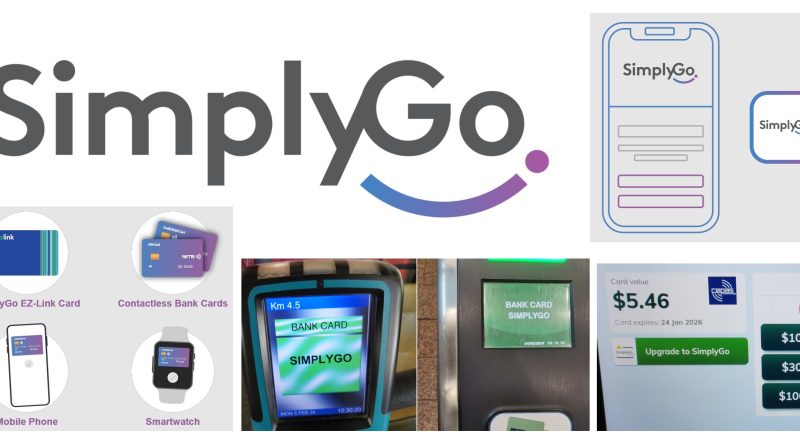
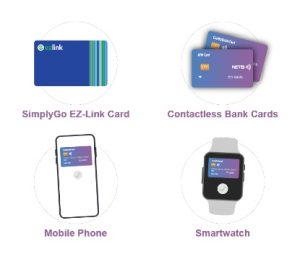
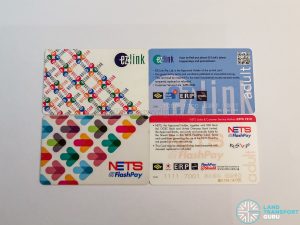
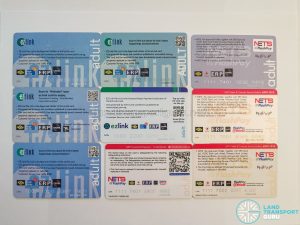
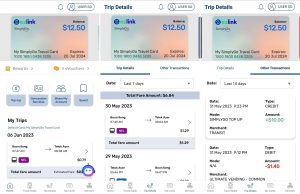
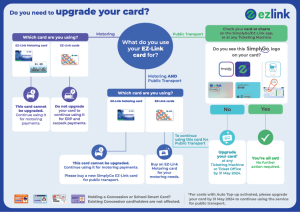
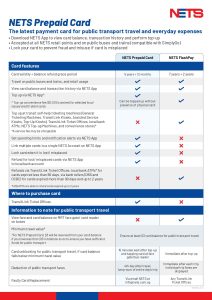
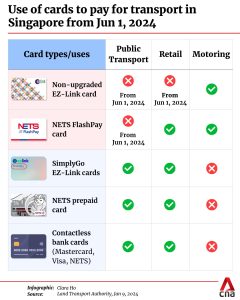
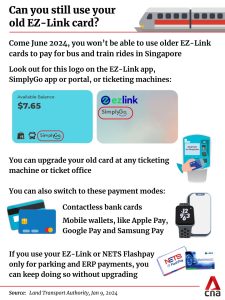
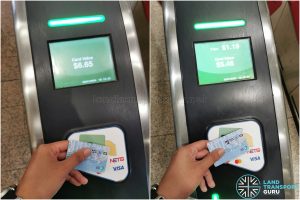


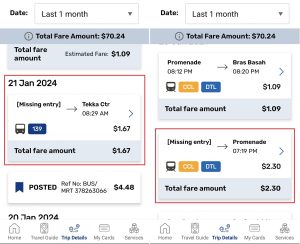
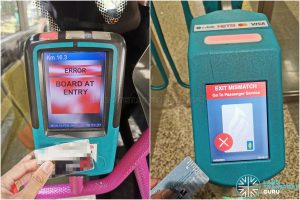
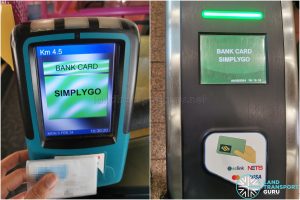
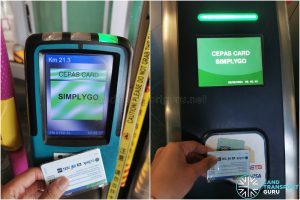
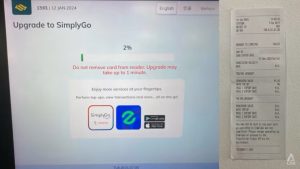

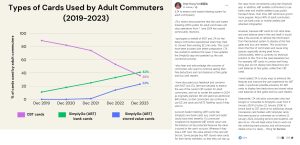
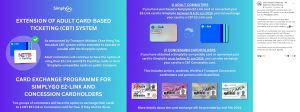
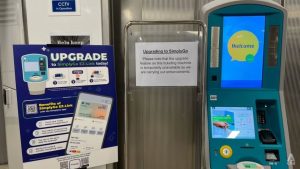
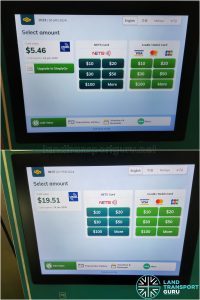
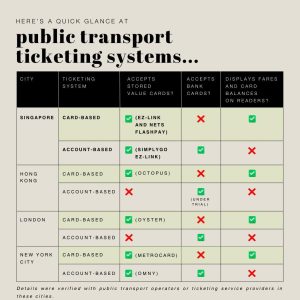
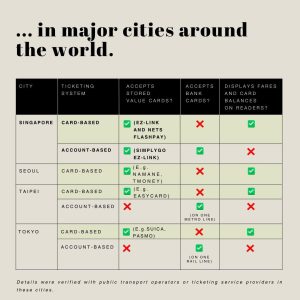
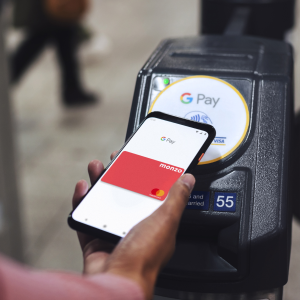
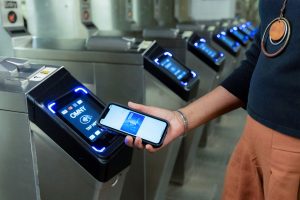
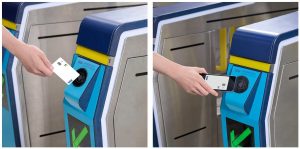

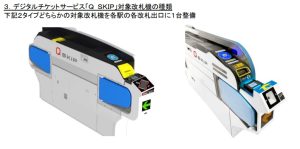
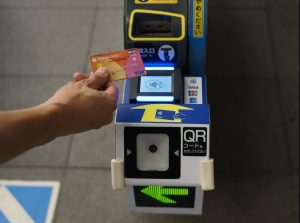
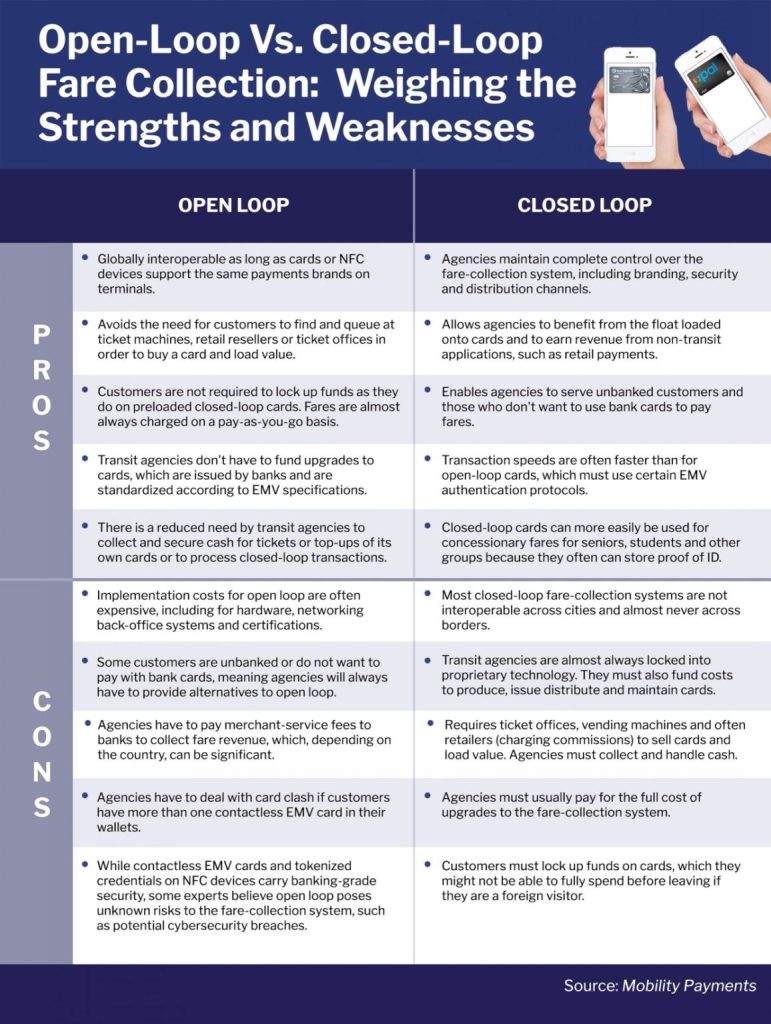
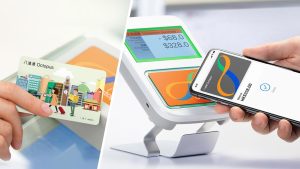
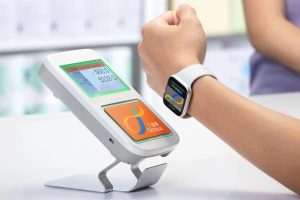

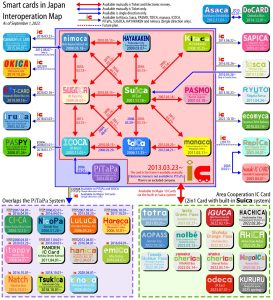
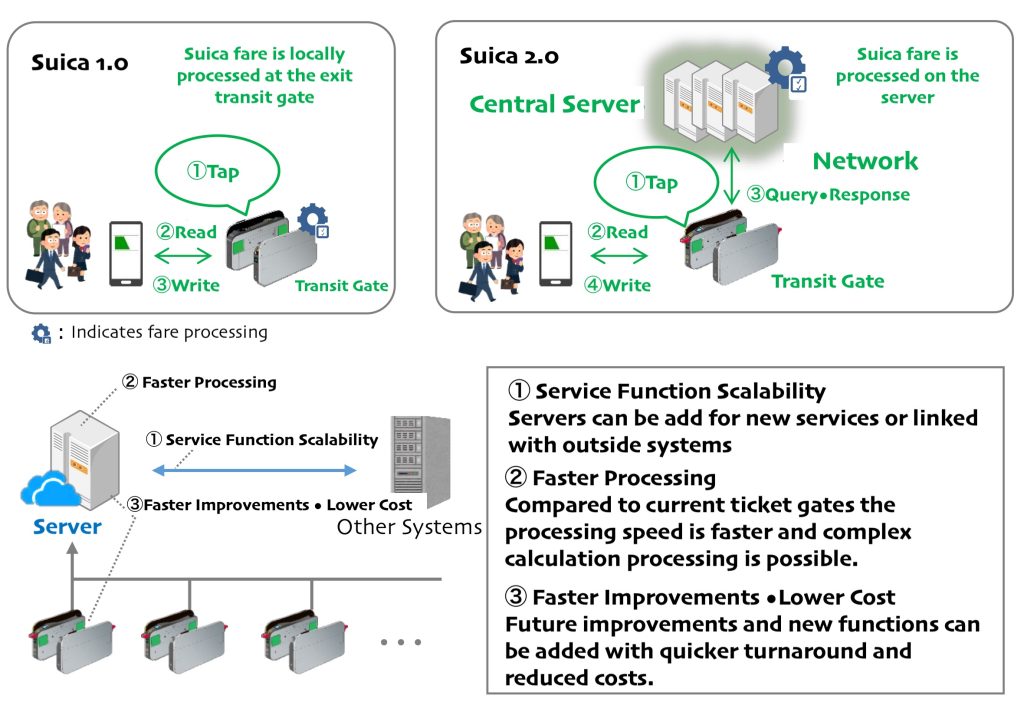
Excellent and detailed writeup! It should be obvious by now, instead of trying to shoehorn all card types into one system at the expense of poorer user experience, different card types are better served by different processing systems; Card-based Ticketing for stored-value cards & Account-based Ticketing for credit cards.
Actually, no need so complicated. Write so much for what? Engineering and business is talk about efficiency one, and the way to be efficient is to keep things simple.
So, to put it simply,
1. The fare display at the faregate: actually, the problem is lack of signal, to differentiate the person in front and us, when we tap into the MRT faregate. Meanwhile, the bus is quite obvious, cuz got the beep sound. Maybe can consider retrofitting the MRT fare gate to also have the beep sound.
2. They should have just continue to accept the cpass and ezlink card, until all the cards expire. Just like nets, ezlink and cpass are probably just card companies. Just like master and visa like that. Really no need to complicate this part.
3. They should continue to accept top up via cash.
Basically, the solution is that simple.
Really no need to complicate such a simple matter.
They can just simply go resolve it. No pun intended. It’s just whether they want to resolve it only. But from the looks of it, it seems that they rather politicise and/or complicate the issue instead, so that everyday Singaporeans would have something to talk about in their everyday lives.
MRT fare gates don’t have beep sound meh?
this is supposed to be an in-depth explainer about how things work and why things turned out they way it is